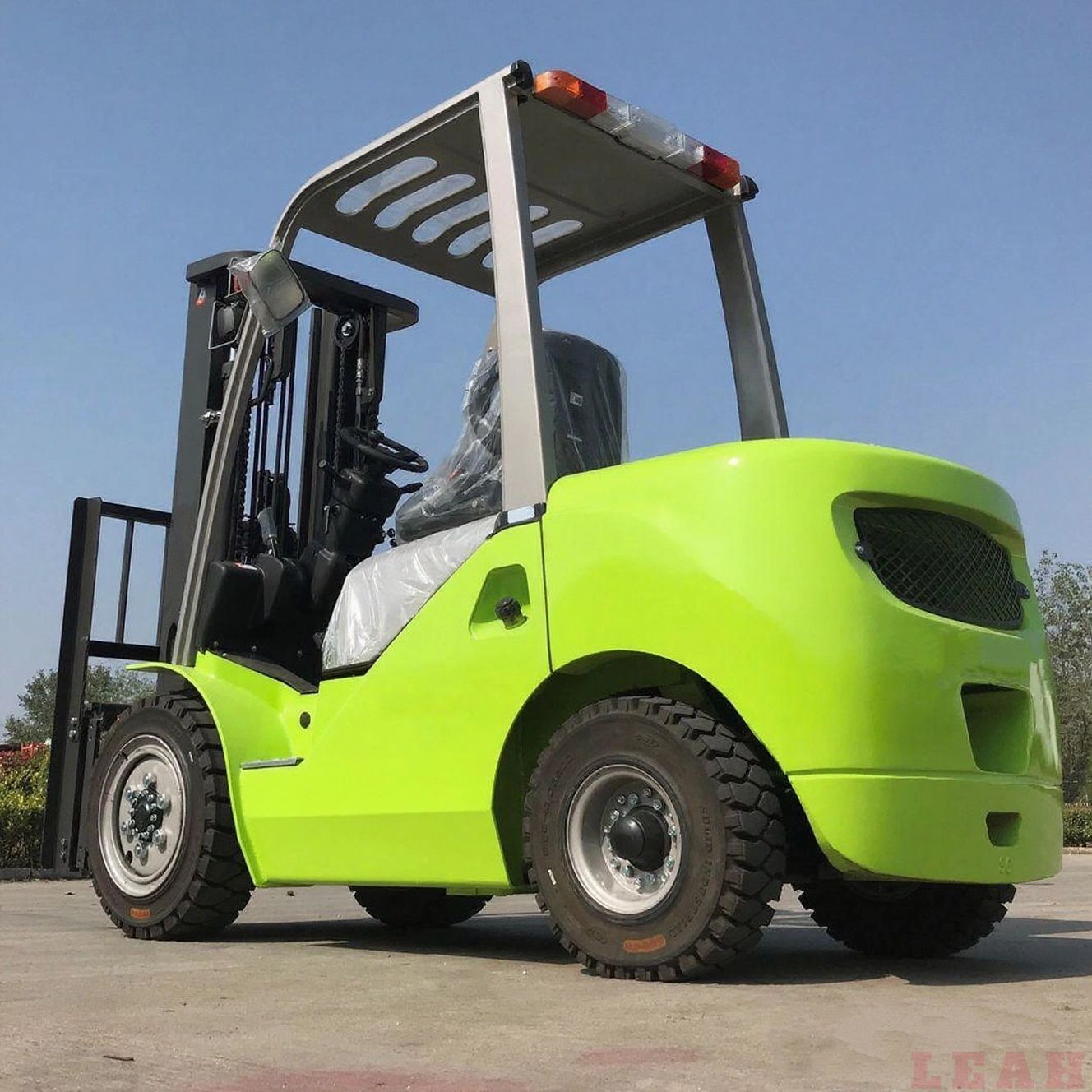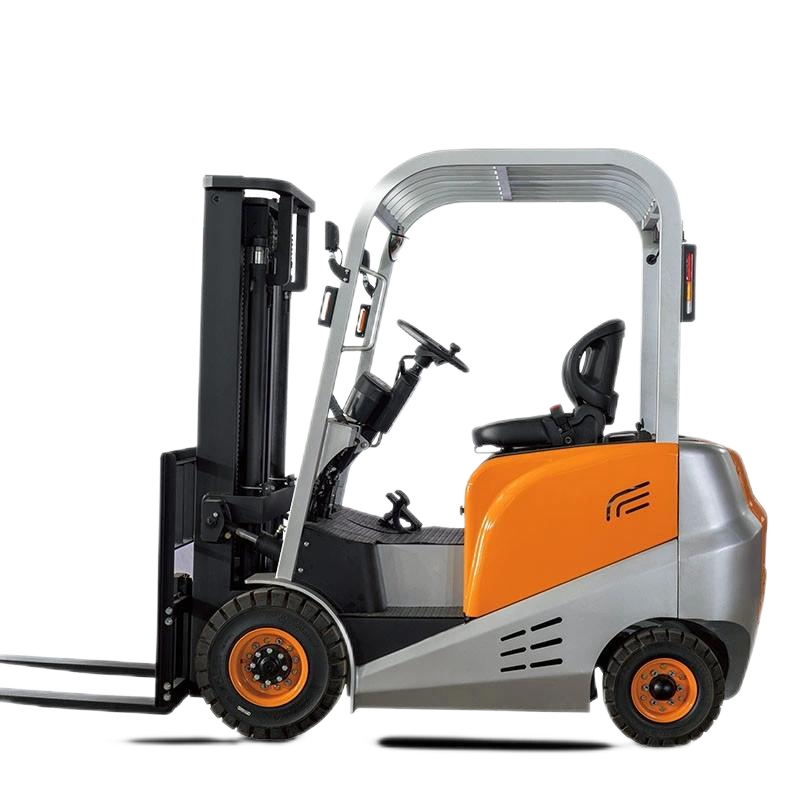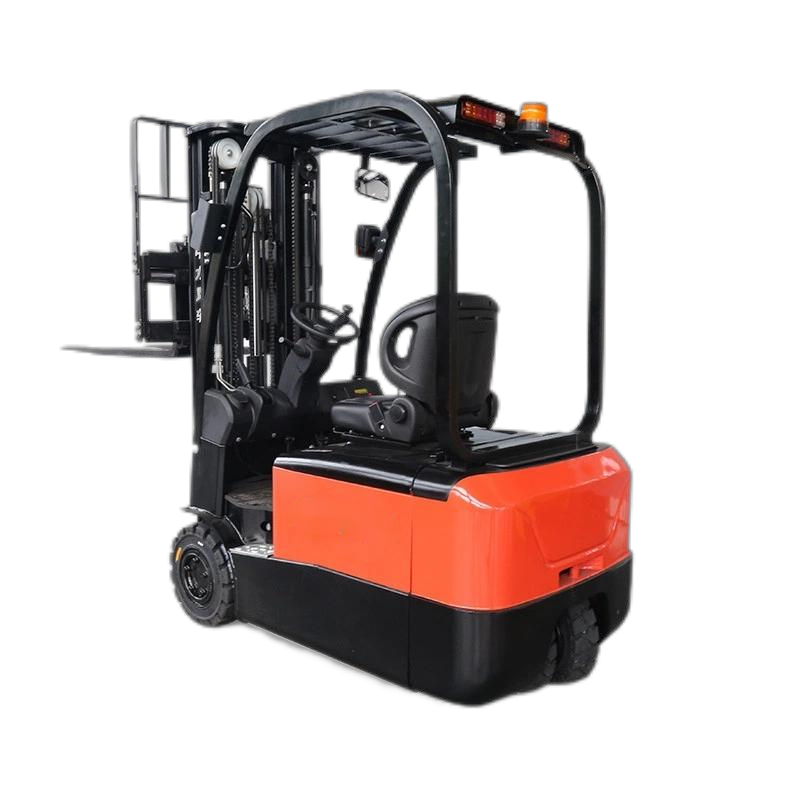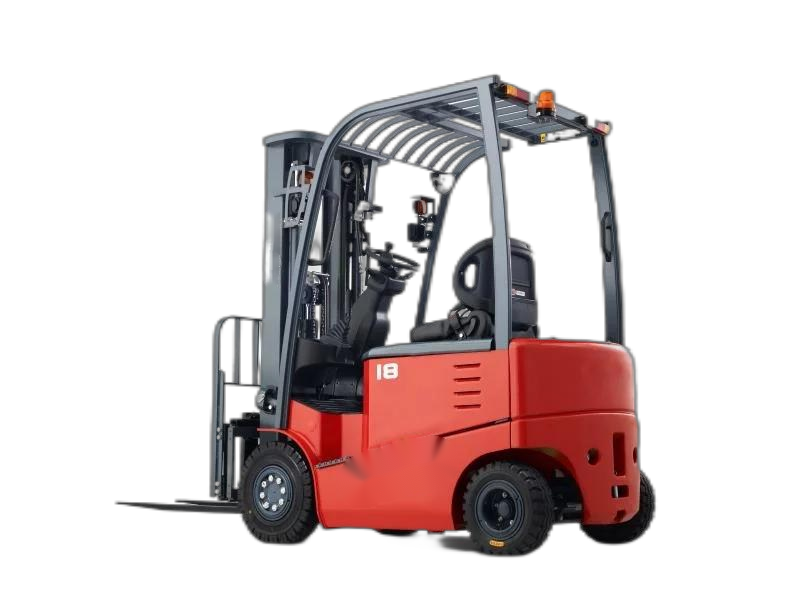The structure of an electric forklift is a sophisticated integration of mechanical and electronic systems, where its core components work in synergy to achieve efficient and safe cargo handling. The following explanation covers its key components, technical details, and design features:
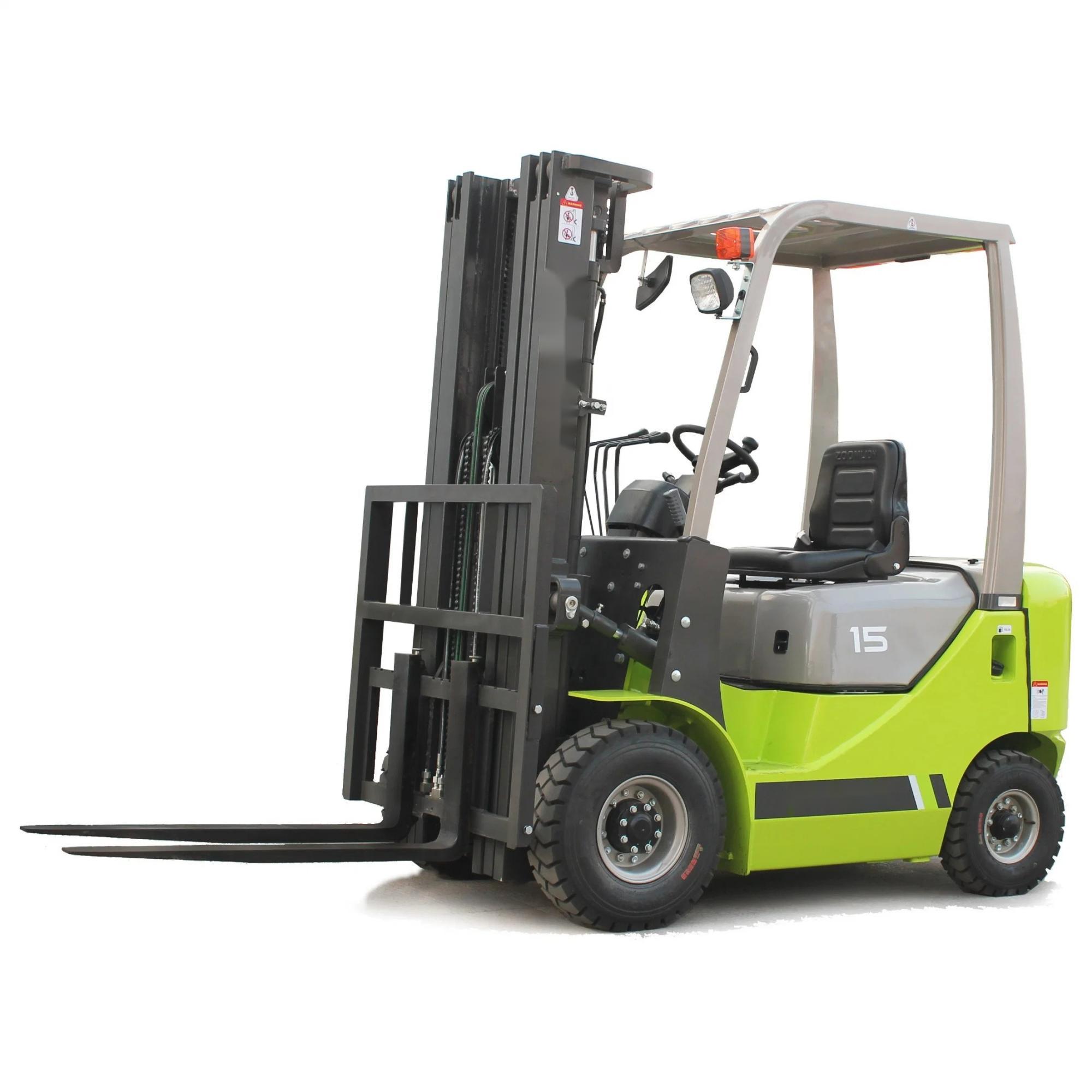
I. Power System: The Cornerstone of Energy and Propulsion
1. Battery Pack
As the energy source of an electric forklift, common battery types include lead-acid batteries and lithium-ion batteries. Lead-acid batteries, featuring low cost and simple maintenance, are widely used in medium-to-low intensity operations. Lithium-ion batteries, on the other hand, have higher energy density and faster charging speeds, making them suitable for high-frequency, long-endurance requirements. The battery compartment is usually located at the bottom of the forklift and must meet design requirements for acid corrosion resistance and ventilation/heat dissipation. Some models adopt a modular design for easy replacement.
2. Motor and Transmission
Drive motors are categorized into two types: direct current (DC) and alternating current (AC). DC motors have high starting torque, making them ideal for heavy-load and frequent start-stop scenarios (e.g., port yards). AC motors excel in high efficiency, energy conservation, and rapid response, and are often used in warehouse environments requiring long hours of continuous operation. The motor adjusts speed and torque through a transmission to drive the wheels for forward movement, backward movement, and steering. Some high-end models use permanent magnet synchronous motors to further improve energy efficiency.
II. Hydraulic System: The Core Power for Cargo Lifting
1. Hydraulic Components
Composed of hydraulic pumps, cylinders, multi-way valves, and other parts, the hydraulic system operates as follows: the motor drives the hydraulic pump to pressurize hydraulic oil, which is then distributed to the lifting cylinders and tilting cylinders via control valves—enabling the lifting/lowering of forks and the tilting of the mast. For instance, lifting cylinders push the forks to move vertically through piston movement, with a maximum lifting height of over 10 meters; tilting cylinders adjust the angle of the mast to prevent cargo from slipping.
2. Intelligent Control
The hydraulic system is deeply integrated with the Vehicle Control Unit (VCU). Pressure sensors monitor cylinder pressure in real time and automatically adjust hydraulic oil flow based on load data to avoid overloading. Some advanced systems can learn the operator’s habits, establish hydraulic control models, and achieve autonomous optimization—reducing energy consumption while enhancing operational smoothness.
III. Body and Structure: Guarantees for Stability and Durability
1. Frame and Mast
The frame is welded from high-strength alloy steel. Its load-bearing capacity is enhanced by optimizing bending and torsional stiffness (e.g., the frame of a 5-ton forklift can withstand over 20 tons of stress). The mast typically has a multi-stage nested structure (e.g., two-stage or three-stage mast) and cooperates with chain or gear transmission to realize the vertical lifting of forks. Counterbalanced forklifts are equipped with cast iron counterweights at the rear, which form a moment balance with the front load to prevent forward tipping.
2. Wheels and Steering
The front wheels serve as drive wheels, while the rear wheels are steering wheels. Tire types are selected based on working conditions: solid tires are suitable for rough surfaces, and pneumatic tires provide better shock absorption. Most steering systems adopt hydraulic power assistance, which reduces operating force by 40% and alleviates operator fatigue.
IV. Control System: The Neural Center for Precise Operation
1. Operation Interface
The cockpit is equipped with a multi-functional joystick, a digital instrument panel, and a color display screen. The joystick integrates functions such as forward/backward movement, lifting/lowering, and tilting; some models support programmable buttons for customizing operation logic. The instrument panel displays real-time information (e.g., battery level, speed, load) and triggers audio-visual alarms in abnormal states (e.g., overloading).
2. Intelligent Control Technology
The Vehicle Control Unit (VCU) coordinates the operation of the motor, hydraulic pump, and sensors via the CAN bus. For example, when the load sensor detects overloading, the VCU automatically limits the lifting height, reduces travel speed, and activates overload protection devices (e.g., mechanical locking mechanisms). Some high-end models integrate autonomous driving modules, supporting path planning and obstacle avoidance.
V. Safety and Human-Centered Design: Detailed Considerations in Structure
1. Safety Devices
- Mechanical Protection: Fork ends are equipped with anti-drop baffles, and overhead guards are installed on top of the mast to prevent cargo from falling.
- Electrical Protection: The battery compartment is fitted with overcurrent and overheating protection circuits; the charging system uses pulse technology to reduce water loss and extend battery life.
- Emergency Braking: The hydraulic system integrates emergency lowering valves, allowing manual release of hydraulic oil to lower the forks slowly in case of power failure.
2. Ergonomic Optimization
- Cockpit Design: Suspended seats filter vibrations; adjustable steering columns adapt to operators of different heights; hydraulic power steering reduces steering wheel operating force to 60% of that of traditional systems.
- Visibility Enhancement: The mast adopts a narrow steel column and low-obstruction design; some models are equipped with 360° cameras, controlling blind spot coverage to less than 5%.
- Operational Convenience: Expanded floor space design (e.g., moving tilting cylinders downward) increases foot movement area; widened steps facilitate getting on and off the vehicle.
VI. Type Differences: Scenario-Adapted Structural Design
1. Counterbalanced Forklifts
The rear counterweight and front load form a moment balance, providing strong load-carrying capacity (1–5 tons) and suitability for heavy-load operations in spacious areas. Their mast structure is robust and compatible with high lifting heights (e.g., over 6 meters), but their long body requires an operating aisle of over 3 meters.
2. Reach Forklifts
Eliminating the rear counterweight, reach forklifts have extendable forks and a compact body (requiring only a 2.5-meter-wide aisle), making them ideal for warehouses with dense shelves. By extending the forks forward to reduce forward-tilting moment, they maintain stability when operating on medium-to-high shelves (3–6 meters).
3. Warehouse Forklifts
Designed primarily for operation in narrow spaces, for example, three-way stackers are equipped with rotatable forks and can complete right-angle stacking in a 1.8-meter-wide aisle—often used in automated warehouses.
VII. Materials and Manufacturing Processes: The Underlying Support for Performance
1. Application of High-Strength Materials
The frame and mast are made of alloy steel with a strength grade of Q345B or higher. Welding processes are completed by automated robots, with weld strength reaching over 90% of the base material to ensure no deformation during long-term use.
2. Modular Design
Core components such as motors and hydraulic pumps use standardized interfaces, enabling quick replacement during maintenance and reducing downtime. For example, the replacement time of the drive axle module of a certain brand of forklift has been shortened from 4 hours to 1.5 hours.
VIII. Future Trends: Technological Innovation and Sustainable Development
1. Integration of Green Energy
Hydrogen fuel cell forklifts are gradually being applied. Their power generation process is pollution-free, with hydrogen refueling taking only 3 minutes and endurance comparable to internal combustion forklifts—suitable for scenarios with high environmental protection requirements.
2. Intelligent Upgrading
Forklifts integrated with AI algorithms can predict battery life, diagnose potential faults, and realize fleet management via cloud platforms. For example, a certain system optimizes maintenance cycles by 30% and reduces operating costs through the analysis of historical data.
3. Lightweight Design
The application of composite materials such as carbon fiber is gradually increasing, reducing body weight while maintaining strength to improve energy efficiency. Experiments show that a 10% reduction in frame weight can increase endurance by 8%.
Conclusion
The structure of an electric forklift is a perfect combination of mechanical engineering, electronic technology, and ergonomics. The precise collaboration of its core components, innovative application of materials and processes, and intelligent functional design collectively enable efficient, safe, and environmentally friendly cargo handling. Whether it is the heavy-load capacity of counterbalanced forklifts or the flexible maneuverability of reach forklifts, every structural detail reflects a deep understanding of actual operational needs. With continuous technological progress, electric forklifts are moving toward greater intelligence and greener operation, providing solid support for the modern logistics industry.






